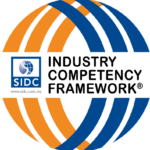The capital markets may be affected by varied sustainability concerns in that it presents both risks and opportunities for the industry players and participants. As seen in recent times, environmental events have led to erratic weather patterns, rising water levels and severe flooding leading to the destruction of infrastructure, disruption of supply chains, posing material and even physical risks to businesses.
On the other hand, these concerns also present opportunities to increase the range of investment products and services that address sustainability issues such as renewable energy, green buildings, and climate-smart agriculture and cities. This is important because the capital markets have a vital role to play in directing capital flows to support a nation’s transition to a low carbon economy as well as other sustainable development goals. In tandem with the growing importance placed on sustainability by policymakers, investors ie. institutional, foreign and even retail are steering their investments towards businesses and activities that are truly sustainability based.
Amidst greenwashing controversies and other issues concerning sustainability by corporates and the many interpretations of what is `sustainable and responsible investments’ (SRI), however, how do capital market institutions respond to their clients’ increasing preferences for SRI if there is no formal and agreed-upon definition? How do businesses align their business models and strategies to be truly within the ambit of SRI, particularly businesses with regional and international presence.
This is where a unified and standardised taxonomy comes into play to assist the capital market participants, whether fund managers, investment banks, financial institutions, investors and businesses, determine whether an economic activity or project qualifies as an SRI. This allows for consistency, accuracy and transparency in tracking and reporting.
This programme will cover discussions on the elements of a taxonomy framework, the developments of a unified taxonomy regionally and in Malaysia, while learning from other international and national experiences and leveraging on international best practices and science-based definitions to prevent Malaysian financial institutions, issuers, asset managers and other players from being left behind as the rest of the world converges towards a global standard.












